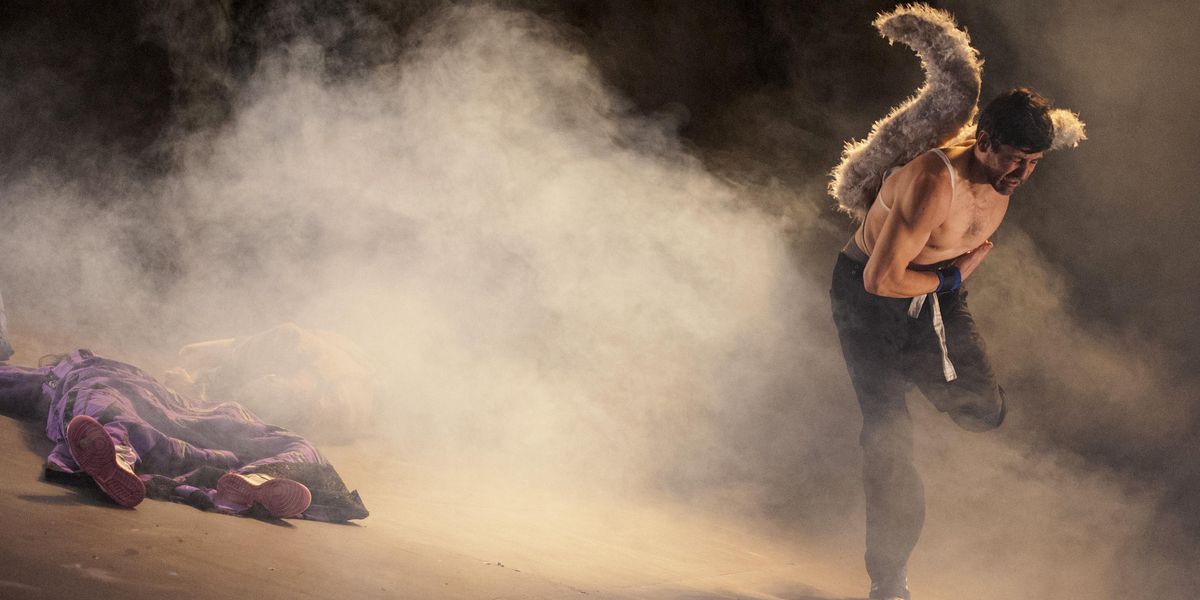Luis Biasotto, Co-Founder of Argentina’s Grupo Krapp, Dies at 49
Luis Biasotto, renowned Argentinian dancer, choreographer, director, teacher and co-founder of Grupo Krapp, died of complications from COVID-19 on May 16 in his hometown of Córdoba, Argentina. He was 49.
Of his untimely death, Luciana Acuña, his long-time artistic partner and friend shared this remembrance on Grupo Krapp’s Facebook page, “Who am I going to jump into the void with now? … Luis moved comfortably in the abyss. The emptiness, besides giving him panic, gave him peace of mind. A brave being, by nature. A contemporary hero out of a Marvel comic book. To rehearse with Luis was not being able to stop admiring him, to be surprised at every moment, to burst out with laughter and to be certain of sharing the world with a being from another planet. How to dance again without you?”
Biasotto began his extensive dance training at the University of Córdoba, where he graduated with a degree in performing arts, with a focus on dramaturgy, theater and dance. Subsequently, he completed a master’s degree in Spain.
In 1998, he created Grupo Krapp with Acuña, and throughout their prolific time working together, premiered shows that transcended category, performing in the United States, Europe and Latin America. Among the group’s works, which he directed, wrote and performed in, are ¿No me besabas?, Hielo negro, Mendiolaza, Olympica, Adonde van los muertos (lado A y lado B) and El futuro de los hipopótamos. He also collaborated other Argentinian artists, as well as with the Mexican company Tumàka’t, creating the work Yo, antes es ahora, and he worked with Francis Ford Coppola in the film Tetro, as acting coach of the protagonist Vincent Gallo. Since 2010, Biasotto was on faculty at the National University of the Arts in Buenos Aires, where he taught choreographic composition.
Expressions of shock and sympathy filled social media outlets throughout Latin America, and beyond, as artists and friends remembered his immense contribution to dance and theater, and his startlingly unique vision as an artist. Mendiolaza which was presented by the American Dance Festival in 2004, Gia Kourlas, writing in The New York Times in 2006 described Grupo Krapp as using “rich imagery and heightened abstraction to convey feelings of isolation, otherness, profound loneliness, marginalization, and desperation in a surreal environment…. Underscoring a tense interplay of sensations, images and actions which ultimately, attest to the fragile condition of the human soul.”
In an email message, Ecuadorian writer and longtime friend of the Biasotto and Acuña, Daniela Alcívar Bellolio writes of Grupo Krapp, “because the language they have created in these almost twenty years is alien to all other languages, and makes singularity an exercise always taken up again: to build and destroy are actions and desires that cannot be differentiated and to that extent expel any metalanguage, any approximation, which does not mean that Krapp’s scenic and corporal practice is alien to thought and even to theory. No: what happens is that they write and think with movement, with contortion, with stammering, with convulsion, with silence or with shouting, with error rather than affirmation. The Krapps break, they break, they break it. We call it theater but it is also music, cinema, literature, rough dance, elegant in its rejection of the conventional forms of elegance.”
Biasotto and Acuña had planned to join a pre-pandemic project, or propuesta coreográfica, with the working title How To Stay in a Dream (or) Ratas de dos Patas, with U.S. dance artists Amy Chavasse, Austin Selden, Nola Sporn Smith, and Mexican dance artist Paty Lorena Solórzano. It was re-conceived as an online collaboration in fall 2020. The six artists had been meeting twice weekly since January 2021, sharing ideas, perspectives and building a wildly diverse array of materials through Zoom. The influence of Biasotto’s vision lives on in this forthcoming project. —Amy Chavasse




